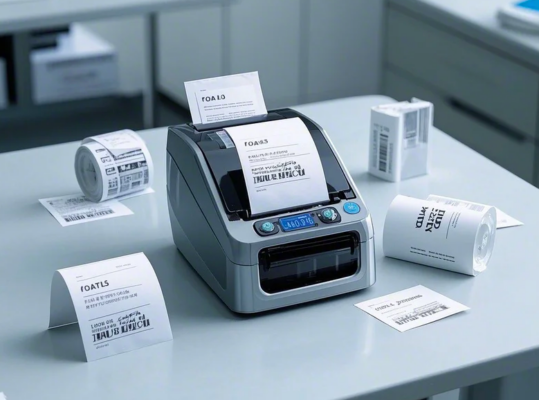Table of Contents
ToggleLabel printers are essential tools for businesses that require precise and efficient labeling solutions. They cater to various applications, including product labeling, shipping, and inventory management. Barcode printers, a type of label printer, are specifically designed to create barcode labels, which can be scanned for information retrieval. Understanding the differences between barcode printers and general label printers is crucial for selecting the right equipment for your needs.

Understanding Label Printers
Types of Label Printers
There are several types of label printers available, including:
- Thermal Transfer Printers: Use a ribbon to transfer ink onto labels, ensuring durable and high-quality prints.
- Direct Thermal Printers: Use heat-sensitive paper that darkens when heated, ideal for short-term labeling.
- Inkjet and Laser Printers: Use liquid ink or toner to print labels, offering versatility and high-resolution prints.
Applications of Label Printers
Label printers are versatile and can be used for various applications, such as:
- Product Labeling: Creating labels for products with information like ingredients, manufacturing date, and pricing.
- Shipping Labels: Generating labels for packages, including addresses and tracking information.
- Inventory Management: Printing labels for inventory items to streamline tracking and organization.
Understanding Barcode Printers
How Barcode Printers Work
Barcode printers are specialized label printers designed to produce barcode labels. They use two main printing technologies:
- Thermal Transfer: Ensures durable barcode labels that withstand harsh conditions.
- Direct Thermal: Suitable for short-term barcode labels that are cost-effective and easy to produce.
Applications of Barcode Printers
Barcode printers are primarily used for:
- Retail: Creating barcode labels for products to facilitate quick scanning at checkout.
- Warehousing: Printing barcode labels for inventory management and tracking.
- Healthcare: Generating barcode labels for patient identification and medication tracking.
Key Differences Between Barcode Printers and Label Printers
Functionality and Design
Barcode printers are specifically designed to produce barcode labels with high precision and clarity. They often include features like barcode generation software and high-resolution print heads. General label printers, on the other hand, are designed for a broader range of labeling needs and may not have specialized features for barcode printing.
Printing Technologies
While both barcode printers and general label printers can use thermal transfer and direct thermal technologies, barcode printers are optimized for barcode generation. This optimization includes higher print resolutions and faster print speeds, ensuring accurate and efficient barcode production.
Applications and Usability
Label printers offer broader usability, suitable for various labeling tasks beyond barcode generation. They can print labels for products, shipping, and inventory management. Barcode printers, however, are tailored for barcode-specific applications, providing the necessary precision and functionality for barcode labeling.
Cost and Maintenance
Barcode printers may have higher initial costs due to their specialized features and higher print resolutions. Maintenance for barcode printers often involves ensuring the print heads and barcode generation software are functioning correctly. General label printers, while versatile, may require different maintenance routines based on the type of printing technology used.
In conclusion, understanding the differences between barcode printers and label printers is essential for selecting the right tool for your business needs. While label printers offer versatility for various labeling applications, barcode printers provide specialized functionality for accurate and efficient barcode label production. By considering your specific requirements and the unique features of each type of printer, you can make an informed decision that enhances your labeling processes and overall efficiency.
0
